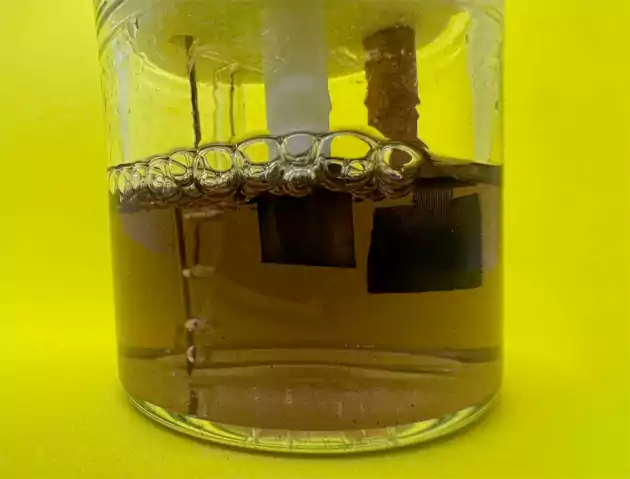Domestic specialists have created a copolymer material that can be used as the basis for environmentally friendly and efficient organic batteries. Here’s what properties it has.
Lithium-ion batteries have capacity limitations, low durability, and slow charging. A possible alternative is organic energy accumulators, such as those based on quinone compounds. These are capable of efficiently accumulating and releasing energy using reversible oxidation-reduction processes, according to the official website of the Decade of Science and Technology in Russia.
Scientists from Saint Petersburg State University have developed an accessible and effective method for producing a composite material based on hydroquinone and the conductive polymer polyethylenedioxythiophene. The method is based on direct electrochemical copolymerization. First, the scientists combined the initial components — the monomers 3,4-ethylenedioxythiophene and hydroquinone — in an organic solvent. Under the influence of an alternating electric pulse, a polymerization reaction was initiated on the electrode, resulting in the synthesized copolymer.

A suspension of the synthesized copolymer in a solution. Source: Oleg Levin / science.rf
To assess the material’s ability to accumulate electric charge, electrochemical tests were conducted in an acidic environment. The results showed that the specific capacity of the copolymer ranged from 85 to 112 milliampere-hours per gram of substance. The material retained 72% of its initial capacity after 100 charge-discharge cycles and 65% after 200 cycles.
These characteristics are comparable to those of most modern organic materials at early stages of research. They confirm the potential of using the copolymer for the production of highly efficient electrodes. For comparison: lithium-ion batteries in smartphones retain about 80% of their initial capacity after 300–500 operating cycles. Since the copolymer was tested exclusively in laboratory conditions without optimizing the structure of a complete battery, there is potential for further improvement of the material’s characteristics.
The authors of the study found that in the obtained copolymer, the processes of accumulation and release of electric charge, caused by fragments of hydroquinone, proceed with an efficiency of up to 99%. Thus, almost the entire volume of electric energy spent on charging (oxidation) is successfully restored during subsequent discharge of the material.

Synthesis of material directly on a metal current collector. Source: Oleg Levin / science.rf
“The created material can be used in aqueous organic batteries and thus reduce dependence on expensive and environmentally harmful inorganic materials such as lead and cobalt. This opens up prospects for creating affordable and sustainable energy storage solutions, which is important for the transition to green energy and reducing the carbon footprint,” concludes project leader Oleg Levin, Doctor of Chemical Sciences and Professor of the Department of Electrochemistry at Saint Petersburg State University.
